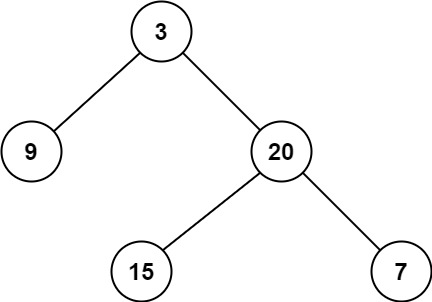给定一个二叉树,找出其最小深度。
最小深度是从根节点到最近叶子节点的最短路径上的节点数量。
说明:叶子节点是指没有子节点的节点。
示例 1:

输入:root = [3,9,20,null,null,15,7]
输出:2示例 2:
输入:root = [2,null,3,null,4,null,5,null,6]
输出:5提示:
- 树中节点数的范围在
[0, 105]内 -1000 <= Node.val <= 1000
题解:
递归法(深度优先):
// 时间复杂度:O(n)
// 空间复杂度:O(n)
func minDepth(root *TreeNode) int {
if root == nil {
return 0
}
min := func(a, b int) int {
if a < b {
return a
}
return b
}
if root.Left == nil && root.Right == nil {
return 1
}
minD := math.MaxInt
if root.Left != nil {
minD = min(minDepth(root.Left), minD)
}
if root.Right != nil {
minD = min(minDepth(root.Right), minD)
}
return minD + 1
}使用队列解决(广度优先):
// 时间复杂度:O(n)
// 空间复杂度:O(n)
func minDepth(root *TreeNode) int {
if root == nil {
return 0
}
minD := math.MaxInt
depth := 1
queue := list.New()
queue.PushBack(root)
for queue.Len() > 0 {
length := queue.Len()
for i := 0; i < length; i++ {
node := queue.Remove(queue.Front()).(*TreeNode)
if node.Left == nil && node.Right == nil {
return depth
}
if node.Left != nil {
queue.PushBack(node.Left)
}
if node.Right != nil {
queue.PushBack(node.Right)
}
}
depth++
}
return minD
}


评论前必须登录!
注册